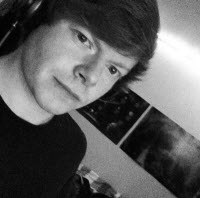Hi Everyone! I'm Andi. Some of you know me from the WDAS monthly meetings or Star Parties, but the WDAS Newsletter reaches a wider audience. I'm also part of your Newsletter team with Mark and Héctor. Héctor created this amazing website for you and he makes the newsletter work. Mark writes most of the articles for your pleasure and education, while I publish them on the web. But this article I'll write myself, because I want to introduce some regular new content to the WDAS website and ask you to consider supporting the work.
I'm not sure how many readers have watched Science and Astronomy content on YouTube, but it has to be the best place to learn on the planet. Hidden within the rants, product reviews, pranks and comedy; many wonderful and dedicated people are devoted to making superbly researched and produced educational videos. Here are a few of my favourite channels:
- Minute Physics: theoretical physicist Henry Reich explains fascinating and mind-bending facts about Science and the Universe short animations. And Henry's colleagues make a sister channel, Minute Earth.
- Fraser Cain: publishes the best on-line news source for Astronomers: "Universe Today", and his YouTube channel explains aspects of Astronomy every week.
- Deep Sky Videos: one of several channels made by Brady Haran and Astronomers & Physicists at Nottingham University. This channel has fascinating stories about Messier objects and tours of the world's biggest telescopes.
- PBS Space Time: favourite of hard-core cosmology fans, this channel is the place to be if you want to really understand how the Universe works as Einstein did.
These channels are labours of love and dedication by their intrepid creators, whose dedication in teaching the world can be a full-time job. They can only do their great work with some financial support. And the best way the internet has so far found to do that is to for some of the millions who benefit from the knowledge to make some trivial monthly contribution. All these content creators fund themselves (in whole or part) through a scheme called "Patreon". Here's the deal: a few hundred people who give a dollar or two per month (sorry, yes, it's always in dollars) can support science education viewed by millions. It's a trivial contribution, yet if we don't throw the odd coin in the hat, that great education resource will be snuffed-out.
Well, here's some great news: there are plenty of science-fans to spread around support so we can choose a channel or two to support.

UK Astrophysicist Sebastian
Pines, creator of 'Astronomic'
YouTube channel.
I'm going to make a case for some WDAS Members to support a new channel called 'Astronomic' by a young British Astrophysicist called Sebastian Pines. Here's a chance to make a big difference, because Seb has the great skill of explaining stellar mysteries in a stream of succinct videos. It takes lots of time to build up a support base, and unlike the channels I mentioned that already have hundreds of supporters, Astronomic is just starting out. You can check out some of his videos... I listed just a few of them below:
- Can we see black holes?
- What are brown dwarfs?
- Where did the Big Bang happen?
- Can a moon have a moon?
- Why is the Sunset red?
- Why is the earth round?
- Do galaxies die?
- Schrodinger
By supporting 'Astronomic', you'll get to see how Sebastian develops the channel, and you can have your name listed as a supporter on his videos! I'm also going to post one or two of the Astronomic videos on WDAS each month, which will be included in the newsletter along with the video transcript. So it's kind of a way to support WDAS too!
If you're up for that, here's a link to Astronomic's Patreon page.
- Log in to post comments

